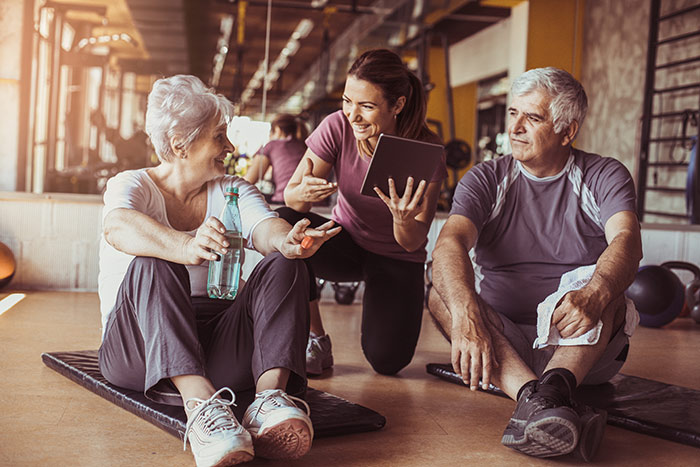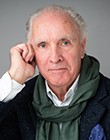2021.10.22
- 調査・研究
© 2020 SASAKAWA SPORTS FOUNDATION
© 2020 SASAKAWA SPORTS FOUNDATION
Mission&Visionの達成に向けさまざまな研究調査活動を行います。客観的な分析・研究に基づく実現性のある政策提言につなげています。
自治体・スポーツ組織・企業・教育機関等と連携し、スポーツ推進計画の策定やスポーツ振興、地域課題の解決につながる取り組みを共同で実践しています。
「スポーツ・フォー・オール」の理念を共有する国際機関や日本国外の組織との連携、国際会議での研究成果の発表などを行います。また、諸外国のスポーツ政策の比較、研究、情報収集に積極的に取り組んでいます。
日本のスポーツ政策についての論考、部活動やこどもの運動実施率などのスポーツ界の諸問題に関するコラム、スポーツ史に残る貴重な証言など、様々な読み物コンテンツを作成し、スポーツの果たすべき役割を考察しています。
2021.10.22

OK Boomer! In 2019 there were over 14.3 million Baby Boomers in the UK making it the largest generational group. Boomers, born between 1946-1964 in 2021 are aged 57 to 75. Boomers do not want to get old. I’m a boomer, I should know. That’s my first qualification to write this article.
Boomers follow the Silent Generation, 1928-1945, known as the wealthiest elderly generation ever seen. The cohort preceding the Silent is the Greatest Generation, defined as people born from 1901 to 1927. This was my mum’s generation being born in 1923. My second qualification for writing this article is helping my mum extend her disease and injury free life by 15 years, living a full life till 97 years old. Females across England in 2020 have a life expectancy of just 82.7 years, or 78.7 for males. Mum compressed an impaired-quality of life into her last six months, compared to average morbidity, quoted by World Health Organisation and our NHS of 17 years. She did this by remaining active, including regular sequence dancing till her mid 80’s, then yoga, a personal trainer and elderly judo helped prevent injuries on the occasions when she did fall.
Local authorities, like Sandwell Metropolitan Borough Council in the West Midlands, where my mum lived, have improved the way social care, health, community and leisure services are brought together to support independent active ageing through social prescribing, which forms part of the NHS Long Term Plan. Social prescribing, care homes and care packages are multi billion-pound opportunities for the fitness industry. An ageing society means more of us will come across these terms where ‘care’ usually means feeding, washing and personal hygiene, whilst sitting for long hours in a chair. Not in Sandwell, where the many parts of the health care systems were joined up and focused on keeping people independent, contributing to society, active and busy.
During lockdown Power Plate and the Berkley Care Group shared the outcomes of encouraging healthy movement including simple stretches to counter the negative effects of inactivity. Over 12 weeks 6 homes and around 250 residents were involved in the programme and key outcomes were tracked. Measurable improvements to functional independence, activities of daily living and fall prevention were achieved in as little as 5 minutes vibration training a day.
Power Plate instructors around the world are now listed on the Remote Coach app, one of the top 30 European start-up companies based in London supported by Google with both cash and in-kind. Remote Coach have grown the number of trainers on the platform to over 20,000 where live interactive sessions can track progress and motivate users.
One trainer is based at the Asics Sports Complex in Tokyo Bay, Japan, where Power Plate vibration training in low-oxygen has been used to help prevent and alleviate lifestyle-related illnesses. This is part of the joint research between Asics Institute for Sports Science and the Ritsumeikan Trust. With the oxygen in the air normalised the complex is also used for active ageing programming. On my last visit to Japan, November 2019, I had the opportunity to try vibration training in a low-oxygen environment and would highly recommend it.
Research papers galore show similar conclusions. The older you get the more likely you are to be inactive, but it doesn’t have to be that way. Research presented at the cardiology conference ESC Congress 2021 from a study of 33,576 patients with an average age of 62 showed that it’s never too late to start exercising to reduce the risk of dying from heart disease. As Daniel Lieberman from Harvard University points out more research is required to understand the ‘dose’ of activity that switches from being a negative feedback loop to being a positive one where exercise becomes necessary and fun. Declining muscle mass is part of ageing, but that does not mean you are helpless to stop it. I wrote my first article on active ageing for Leisure Week in 2006 and concluded that the research is there, if we want to find it, that builds the case for doing more for the ageing population. The industry hasn’t changed that much but health providers have.
The Kings Fund estimate the government spends around £22 billion on adult social care on behalf of around 850,000 in care homes or being kept independent in their own homes. Around 1.5 million people work in the sector. It’s also estimated that the unpaid caregivers save the state around £10bn a year. The trend, budget and numbers involved are set to rise as the older population is growing faster than the working age population. The sector is four times larger financially than the fitness sector and yet is generally ignored by its smaller neighbour which could contribute so much.
In February 2021 the Department of Health and Social Care published the White Paper, Integration and Innovation: working together to improve health and social care for all. The government have yet to announce the detail of how the new funds will be spent but the potential savings are becoming obvious. The UK National Institute for Health & Care Excellence state that if people lose weight, drink less alcohol and become more active it could save the care budget up to £3 billion a year. If the fitness industry grew its membership base from the current 1% to 15% of members aged over 65 it would double the value and size of the industry. It would also become a major partner with local care provision. Are training providers ready to upskill for this specialist generational gold mine where health and activities merge? It seems appropriate to ask if the industry’s Curriculum Vitae, Latin for ‘course of life’ (how apt) will be ready.
With over 15 million people living with at least one long term health condition social prescribing provides a huge opportunity for the industry and Active IQ’s Level 3 Diploma in Working with Clients with Long-term conditions, devised in partnership with Nuffield Health, brings the latest thinking and current best practice into this new qualification. It’s good to see PTs will have a higher skill set and deeper understanding to support this new client group.
New partnerships and qualifications will also help move the national conversation on following the pandemic. How we can age better and how can we liberate the fitness industry from its ageism. In the physical activity space, I find fitness is the most ageist and that’s me talking from experience.
As people move from a work-life balance to a healthy movement-life balance the Boomers, Silent and Greatest generationalists will have reached what John Maynard Keynes described as ‘age of leisure and abundance.’ Staying fit and healthy is crucial to enjoy this age of perfection yet where and what to do for the best. Improving personal fitness levels could be Covid’s greatest gift as new industries spring up to cope with the pent-up demand.
Some sports, like triathlon, are organised by age group categories, divide by gender and five year age bands up to 80+. Hiromu Inada from Chiba prefecture in Japan became the oldest finisher at 85 and at 87 won a Guinness World Record. Marie Dorothy Buder is the female oldest finisher aged 82. Edwina (Eddie) Brocklesby became the oldest British woman to complete an Ironman triathlon aged 74 and is also the founder of Silverfit, a charity dedicated to the promotion of healthy benefits of physical activity for older people, formed as part of the summer 2012 Olympic legacy. Silverfit now organises 13 activities across 14 venues around London and checkout the Silverfit @home YouTube channel. The Ramblers Walking for Health aims that everyone will have access to a short, free and friendly healthy walk to help people become and stay more active. Up to £10m of National Lottery money, distributed by Sport England, is supporting projects encouraging inactive older people to move a little more each day. Oomph!, one of 20 funded projects, is a wellbeing business for older adults, providing training for care home staff to deliver exercise, activity classes and healthy movement.
Analysts at U.S. Fitt Insider estimate that ‘healthy movement’ is a trillion-dollar business, around ten times bigger than fitness. Prioritising healthy balanced movement has become the focus of both the largest companies in the world and countless start-ups. Amazon, for example, have introduced Movement Health as a new feature on HALO, its wrist worn health and activity tracker, which combines artificial intelligence, computer vision and machine learning to produce personalised programming of everyday movements we mostly take for granted and do without thinking.
To improve my healthy movement, I’m taking Mobility classes in Hyde Park, now on the schedule with outdoor training provider Be Fearsome, indoors I’m enjoying LIIT (Low Impact Interval Training) with SoulBody and in Covent Garden Jubilee Hall has been at the heart of the community since 1978 and its daily Active Jubilee class caters for the older community and will be taking part in the national Silver Sunday, the national day for older people, the first Sunday in October.
Ageing is now the predominant cause of disease worldwide and yet it remains poorly understood. The Institute of Healthy Ageing at University College London is the centre of excellence for research on the biology of ageing and ageing-related diseases, one of the most important challenges in biomedical research today. Two fitness suppliers, Keiser and Power Plate, join Harvard Health and American Society for Bone & Mineral Research in publishing a considerable amount of research on older adult fitness including fall prevention, increasing bone density, preventing and controlling osteoporosis and increasing strength and muscle mass, to name a few.
The NHS guidelines are very specific, adults are 19-65 years, for older adults the NHS encourage some type of physical activity every day and the more you do the better. These guidelines along with retirement ages, currently 66 for both men and women in the UK, which will rise to 67 by 2028 and 68 by 2037, perpetuate and sustain the myth that 65 is old when it’s not. The majority of Boomers are still working, like me, and staying active. In just ten years time 27% of the population will be aged 70 plus. For many, 70 will be the new 60 and 60 the new 50 with one message everyone agrees on - it’s never too late to start.
レポート執筆者

David Minton
Founder, LeisureDB
LeisureDB for the most accurate and insightful data and reporting on the fitness industry.
https://www.leisuredb.com/
Special Advisor, Sasakawa Sports Foundation